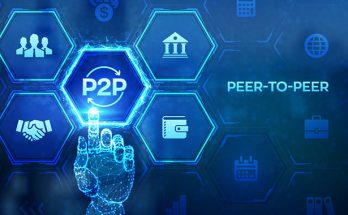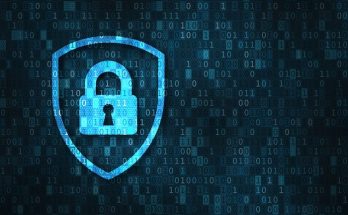Table of Contents
Cybersecurity and cyberattacks are just as real as having a street mugger steal your wallet, or having another nation stealing your country’s technology. Businesses especially are a favorite target of cyberattacks, no matter the business type, size, or location.
According to Buchanan Technologies Toronto, as long as your business is connected to the Internet, it is at risk of being hacked – with company information, technology, finances, and records at risk of being exposed to hostile hackers. Due to this, each business really needs to step up their cybersecurity game, with prevention being much easier and more efficient than trying to cure or recover from a cyberattack or intrusion.
Protecting Your Business
Here are a few high-level tips that you might want to follow to increase the security level of your business.
Hardware
The first part of vulnerability in any computer-based system is the hardware itself. Thus, securing your company’s hardware is of primary importance. With so much attention given to acquiring the newest and most sophisticated types of cyber security software, safeguarding the security of company hardware is actually often overlooked.
Requiring all terminals and computers to have a complicated password is something that is very basic yet is usually not followed by many. Encourage your personnel to commit passwords to memory instead of writing it down or being easily accessed and broken by would-be hackers. In the same light, password-sharing should also be discouraged. Passwords should never be made known amongst different employees or departments, and actions such as asking staff members to temporarily log in guests, contractors and new hires should be closely watched and monitored.
Having hardware physically locked down or anchored to the floor or tables is also a move which is very simple yet very effective against all forms of theft. This limits the ability of hackers and thieves from physically going off with your hardware and any data contained within them. There are also tracking software now available, with some being built-in to some operating systems, such as Apple’s “Find My iPhone”, and Android’s “Find My Device”. You can install and enable such software on all laptops, phones and tablets. By doing this, any stolen equipment can quickly be located by the authorities as long as they are connected to the Internet and powered on.
Software
The next level of cybersecurity deals with software access to your company’s information.
Viruses, malware, and ransomware are just some of the types of software programs which cyberattackers use to invade a business’s computer infrastructure. Ransomware, which are programs which encrypt and lock in data, asking for payment in order to decrypt and give back access to information, is one of the most prevalent risks encountered in recent years.
In order to combat this, using the trio of anti-virus, anti-malware, and firewall programs are needed in conjunction with each other. Each one focuses on a specific type of attack, as one type of defensive program would be weak against a specific attacker. An example of this is that existing anti-virus tools are not very effective against ransomware, which changes almost as quickly as new anti-virus tools are developed. Ransomware can work quietly in the background and only be detected by an anti-virus programs when it is too late to save your files. So, it is important to invest in software that has been specifically designed to deal with each type of challenge.
Furthermore, as an additional security measure, you should consider to adopt a dedicated security framework to provide automate user verification processes, as well as decisions and workflows.
Personnel
More often than not, another usual source of weakness against cyberattacks come from a company’s employees themselves.
Creating a security-focused and aware workplace is of utmost importance, as many employees are found to be the cause of data breaches due to their lack of understanding of their daily actions which could make their company vulnerable against hackers.
Simply banning the use of personal devices in the workplace has always proved not to be effective as people find it difficult not to sneak a peek at their phones every now and then, or even use company computers for social media. It is therefore more impactful to teach staff how to use both their personal devices and work devices in a way that minimizes the risk of being hacked. They should be educated about the risks associated with using unsecured networks to access work information. Password security and responsible website use need to be ingrained as part of the work ethics of employees as well, in order to both take care of their own information as well as that of the company’s.
Have a Plan B
Lastly, all the prevention in the world sometimes isn’t enough to fight against an extremely determined cyberattacker who has a lot of resources behind them. In these rare cases, having backup plans are a company’s best option in order to continue operations freely.
If the company’s data does fall into the wrong hands, making sure such data is encrypted would make it useless to any would-be hacker. Be sure to encrypt all sensitive data, including customer information, employee information and all business data. Full-disk encryption software is included in virtually all operating systems today and can encrypt all the data on a desktop or laptop computer when it’s at rest. Also make sure that such software is always activated and updated on all company devices.
Besides encryption, the backing up of data is the last line of defense a company has. Even if a company’s physical hardware containing data is stolen, having such data encrypted and with up-to-date backups available for restoration anytime makes such a breach have just minimal impact to a company’s operations. Thus, always having a backup plan, and always staying one step ahead of cyberattackers are the best options available for any business to protect itself from online enemies.
Conclusion
Modern cyber threats and potential attacks from malicious third-parties do require to always be on guard and implement the proper security countermeasures, which could be more or less complex depending on the given scenario, but never trivial anymore. Furthermore, such tasks cannot be entirely delegated to IT experts, software developers and system administrators anymore: each and every user need to understand some security concepts and increase the know-how in order to minimize the risk of being hacked and/or "data breached" whitout even being aware of that.
Useful links
If you've liked this post, you might want to check out the following security guides and tutorials:
- Encryption in-transit and Encryption at-rest: definitions and best practices
- Security Best Practices for Individual Services and Applicationss
- Practical Cyber Security strategies for business
- What is a VPN?
- Why should you use a VPN nowadays?
- Make Your Data Safe: 7 Practices Towards Information Security Policy Development
- Free and low-budget security tools against malware and cyber attacks
- Key Elements That Threaten Your Online Security
- 8 Security Mistakes Computer Users Make



